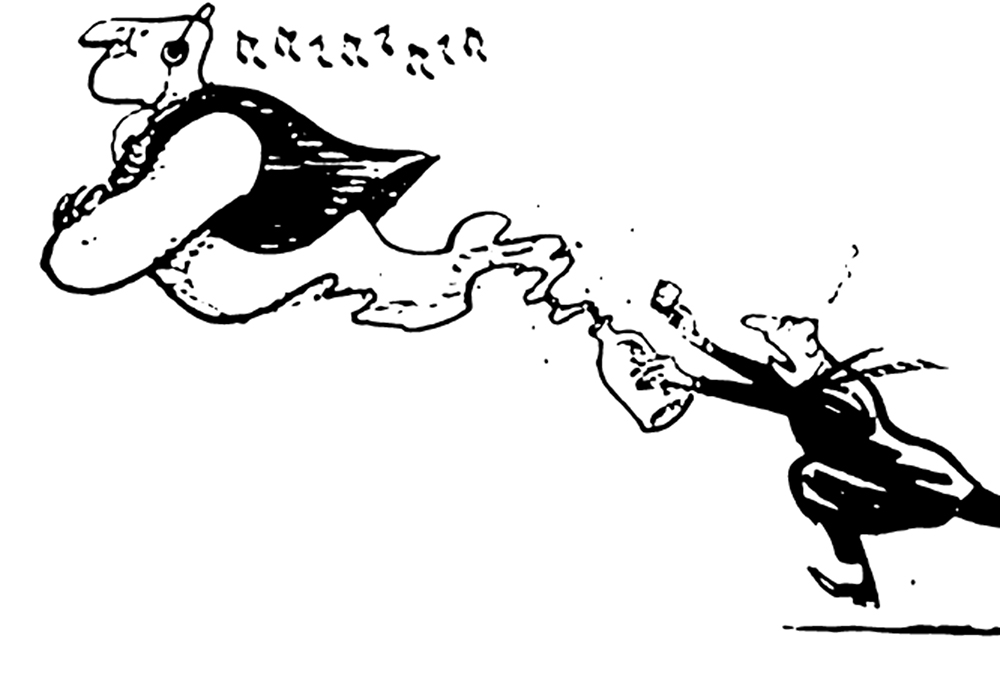 At some stage, most brands encounter a crisis along the way. But what do you do to mitigate the damage and contain the crisis? Sheena Horgan outlines some useful pointers.
At some stage, most brands encounter a crisis along the way. But what do you do to mitigate the damage and contain the crisis? Sheena Horgan outlines some useful pointers.
Damage limitation when a crisis hits is like trying to shut the stable door after the horse has bolted. But in the absence of an adequate risk management and mitigation plan, that includes post-crisis actions, then it is of vital importance.
The only thing worse than the extremes of a knee-jerk reaction or ostrich-approach to a crisis, is a tepid response that neither appeases or appreciates the views of the affected and offended stakeholders.
The following is a selection of areas worth factoring into any reaction to a crisis and where containment – to stop it amplifying – is the key objective.
Timing
Decisive and prompt action is de rigeur. But that doesn’t preclude due consideration, analysis and scenario planning, once it’s swift! Getting out there with an early reaction, even just a holding statement, offers some assurance to stakeholders that the company is pro-actively handling the crisis and ‘on the case’.
Whilst a swift response is important it should also be a carefully measured response – factual, clear, with an indication of ‘what’s being done about it’. Companies often fall on their own sword because the initial statement created an expectation that was then not met. The 2016 Oscars are a case in point where despite complaints of a lack of diversity in the 2015 awards and assurances by the Academy to address this, the 2016 ones were found still wanting.
Extreme care over the exact words used, information released and promises made, needs to be taken. And regular well managed and distributed updates can demonstrate appropriate levels of interest and concern.
Facts Vs Perception
Mark Twain’s wry comment to not let the truth get in the way of a good story arguably resonates in times of crises. Citizen journalism and fake news reach more people than the bona fide news media, and conjecture and supposition will fill the void in the absence of facts. To facilitate honest reporting the full set of facts and the chronology of events must be gathered, and appropriately communicated.
Experts in certain areas, if not already noted and on alert within the crisis contingency plan, should be sought and their viewpoints considered. A caveat to bear in mind though, is that the perceived integrity of this advocacy will be dependent on the company’s goodwill and reputation bank (see the final point 6.), and indeed the ‘experts’, so choose them wisely.
As well as the facts, perception matters, so it’s worth being cognisant of the evolving and indeed changing perceptions that surround the crisis. Monitoring and listening are vital to effective crisis containment, where picking up on a tone and/or a negative thread, and addressing same can circumvent greater noise later.
Following the Trail
Ideally, the crisis contingency plan will have a list of channels, organisations and individuals to be monitored. If not, this needs to be created swiftly. Alerts, as well as both on-the-ground (ie in store) and on social ‘noise’ collation need to be activated, with a timely systematic process to feed this intel back into the crisis team so further or immediate action can be taken if required.
Having to hand a set of known influencers – that are company, issue, industry-related – will be valuable, and this list can be added to over the lifetime of the crisis. And having or initiating a process that allows the company to follow their commentary and engage appropriately in real time will be invaluable.
Perspective & Context
It’s important to take a broad perspective of the crisis in question. To adequately assess the issue and its potential impact, it’s advisable to do a sweep of all aspects of the business. The greatest fire can come from the most unlikely corners and past transgressions can fan the flames of a building crises. As State Street and its agency McCann found when the #Fearless Girl statue was decried as a hypocritical PR stunt amid gender diversity issues.
It’s important to take a broad perspective of the crisis in question. The greatest fire can come from the most unlikely corners and past transgressions can fan the flames of a building crises.
A regularly updated Risk Register that reviews the breadth and depth of the organisation should be considered as crises tend to thrust the organisation into the spotlight and areas that may otherwise be unexposed come under scrutiny and inspection.
Vigilance regarding the breadth of the context of the crisis includes considering the global landscape as what is appropriate in one geographical market may differ in another. (I once had to persuade a global brand’s UK crisis team not to run a product recall ad on Irish radio on the basis that it’s just not how that type of message is conveyed in Ireland and would run the risk of seriously magnifying – unnecessarily – the crisis for the brand).
The Message & the Messenger
The crisis containment team also needs depth (particularly in matrix-organisational structure), but not many chiefs. HR will need to be involved for internal comms, operations if it’s a product/service issue, customer-facing leads and key senior management. Their role is in anticipating the reach of the crisis and its implications.
Deciding on and crafting a sufficiently robust message that will cut through the crisis hype and resonate with the audiences will then fall to the PR/CEO duo. role of PR in all of this is vital if reputation, trust and confidence is to be maintained or even salvaged. But not all PR is equal. And PR competences are escalated when a crisis strikes. The repercussions of the PR decisions made during a crisis may reverberate for some time. Companies would do well to not just focus on the immediate sales or share price hit the brand takes, but also the potential ripple effects to various stakeholder groups.
Striking the right note from the outset will set the all-important tone for the communications throughout the crisis. A consolatory and empathetic but also authoritative and ‘in control’ tone is what’s required: The decidedly icy tone of the (initial) statements made by United Airlines, after its heavy-handed removal of a passenger, and Ryanair, after it let down hundreds of thousands of passengers with cancelled flights, are examples of what not to do.
By comparison, Adidas’ heartfelt public apology for a poorly-thought-through erroneous post to runners saying “Congrats you survived the Boston Marathon” (just after the 2013 bombing) halted what could have been a media onslaught.
And just as it’s understood in crisis 101 that “no comment” is rarely the way to go, the messenger, in most cases, should be the most senior person available.
Anything to Leverage?
And finally, some crises are simply unavoidable, so when they land, is there anything a company can leverage to insulate the brand? Containing a crisis can be made easier if a company already has a bank of trust, goodwill and confidence from stakeholders and shareholders on which it can draw. This reputational repository may deplete during a crisis, but if of sufficient quality and quantity, can significantly help the brand and company weather the crisis.
It’s also worth pointing out that indirect, or even direct, crisis experience can also be leveraged. Continuous learning is an under-utilised concept and too many crisis plans sit gathering dust instead of being reviewed and updated on a regular basis.
As common-sense dictates, preparation is everything. PR has a serious role to play in business strategy, scenario planning and risk mitigation and management. And brands would do well to take heed of the plethora of crises that have hit the great and the good brands in the last 12 months alone.
Sheena Horgan is a director of Hume Brophy.
First published in Irish Marketing Journal (IMJ October 2017)© to order back issues please call 016611660





















